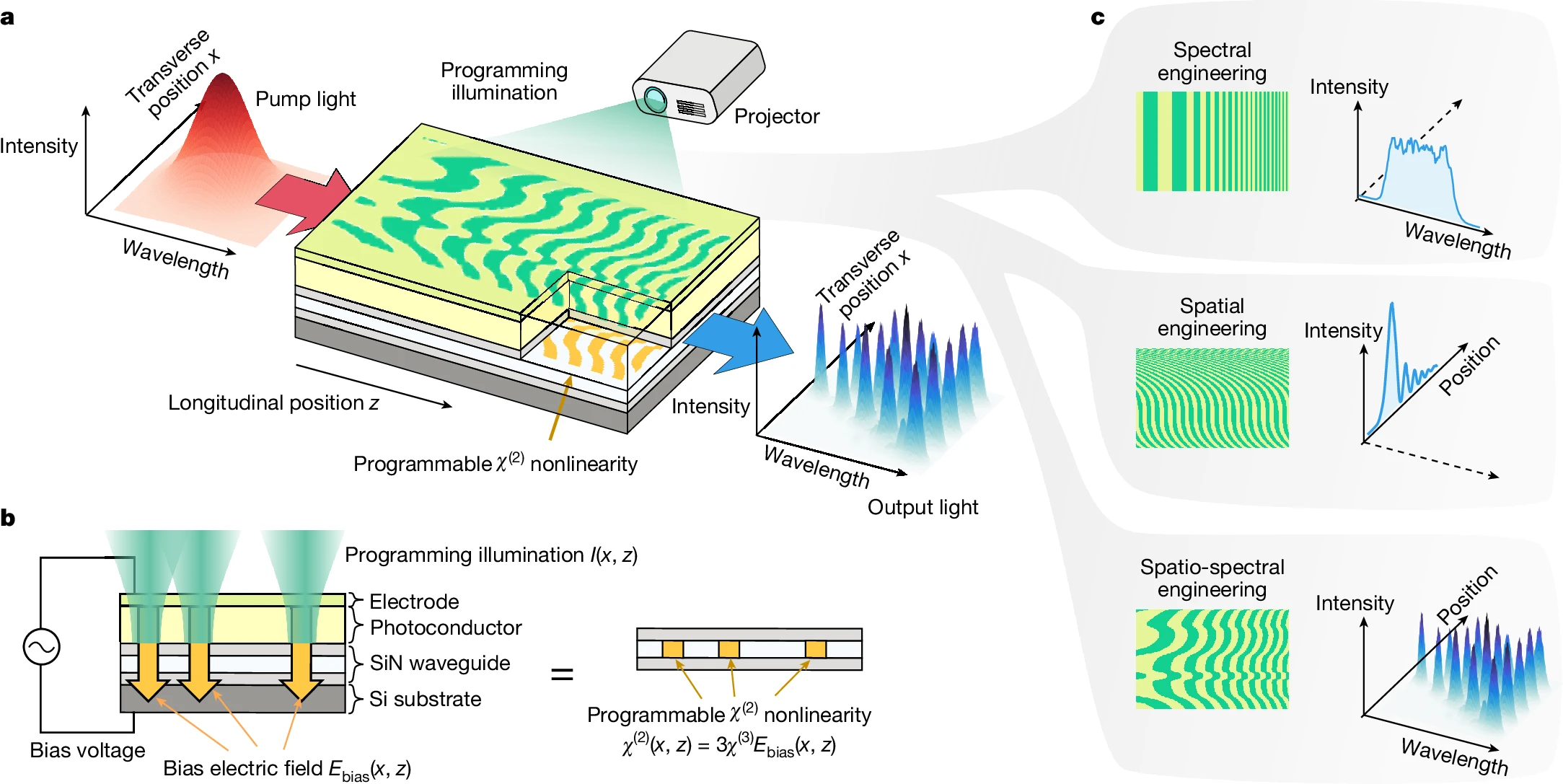
NTT Research, Inc.‘s Physics and Informatics (PHI) Lab, in collaboration with Cornell University and Stanford University, has developed the world’s first programmable nonlinear photonic waveguide that can switch between multiple nonlinear-optical functions on a single chip. This innovation, published in Nature, is intended to move beyond the conventional “one device, one function” paradigm by enabling fast device reconfigurability.
The device’s architecture utilizes an optical slab waveguide with a reconfigurable two-dimensional distribution of χ(2) nonlinearity. This χ(2) nonlinearity is dynamically induced by projecting a structured light pattern onto a photoconductive layer, which controls the internal bias electric field. This unique process allows for the tailoring of arbitrary Quasi-Phase-Matching (QPM) grating structures on a single device. The technique enables functions to be corrected for manufacturing imperfections and environmental drifts after fabrication, potentially improving production yields for large-scale optical circuits.
Using this new device, researchers successfully demonstrated spectral, spatial, and spatio-spectral engineering of Second-Harmonic Generation (SHG). The programmability of the device made it possible to perform in situ inverse design and implement real-time feedback to compensate for external fluctuations. These demonstrations utilized the full two-dimensional control over the nonlinearity distribution.
This advancement is positioned to expand the applications of nonlinear optics to areas where fast reconfigurability is essential, particularly in quantum computing. The technology is expected to enable programmable optical quantum gates, reconfigurable quantum frequency converters, and quantum light sources with programmable entanglement structure, accelerating progress in advanced computation and networking capabilities.
Read the full announcement here and the paper in Nature here.
October 9, 2025


Leave A Comment